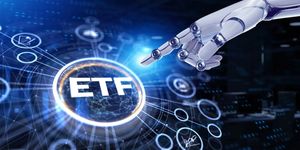
The landscape of artificial intelligence is undergoing a profound transformation, signaling a crucial pivot from the foundational build-out of AI infrastructure to its practical application for boosting productivity across industries. After years focused on developing advanced hardware like GPUs and refining complex models, the market is now squarely focused on how AI can be leveraged to streamline operations, automate tasks, and create unprecedented efficiencies. This shift is not merely an incremental improvement; it represents a fundamental re-evaluation of how businesses can harness AI to unlock new levels of performance and drive substantial economic growth.
This evolving focus has immediate and far-reaching implications. For businesses, it means a clearer pathway to realizing tangible returns on AI investments, moving beyond theoretical capabilities to concrete operational enhancements. For the broader economy, it promises a new era of productivity-led growth, with projections suggesting AI could contribute trillions of dollars to global GDP annually. The race is no longer just about who can build the most powerful AI, but who can most effectively integrate it into their daily operations to deliver measurable improvements in efficiency, innovation, and competitive advantage.
From Silicon to Solutions: Why AI's Productivity Pivot Matters
The narrative of AI development has largely been dominated by the colossal investments in foundational infrastructure. Companies like NVIDIA (NASDAQ: NVDA) and Intel (NASDAQ: INTC) have been at the forefront, designing and manufacturing the specialized chips crucial for training and running complex AI models. However, as this infrastructure matures and becomes more accessible, the market's attention has decisively shifted towards the application of these powerful capabilities. This pivot signifies a maturing industry, ready to move from enabling AI to embedding it deeply into business processes.
This transition is critical because it democratizes AI's benefits beyond a select few tech giants. It allows a wider array of sectors, from the highly technical semiconductor industry to the intricate world of fintech and the ever-vigilant realm of cybersecurity, to harness AI for concrete productivity gains. McKinsey estimates that generative AI alone could add $2.6 trillion to $4.4 trillion annually across various use cases, highlighting the immense economic potential. Companies that embrace AI as a "copilot" for their workforce are seeing marked improvements, with studies indicating AI can increase employee productivity by as much as 66% and reduce project completion times by 30%. This isn't just about automation; it's about augmentation, freeing human capital for higher-value, more strategic work.
In the semiconductor industry, AI is revolutionizing every stage from design to manufacturing. AI-driven simulations optimize circuit designs, shortening development cycles and improving efficiency. Companies such as Applied Materials (NASDAQ: AMAT) and KLA Corporation (NASDAQ: KLAC) utilize AI for yield management, predicting and identifying defects early to minimize waste. AI-powered computer vision systems from Onto Innovation (NYSE: ONTO) and Hitachi High-Tech (TYO: 6501) are detecting minuscule defects on wafers with unprecedented speed and accuracy, surpassing manual inspection. Furthermore, predictive maintenance powered by AI keeps sophisticated fabrication equipment running smoothly, reducing costly downtime for giants like Intel.
Cybersecurity is another sector experiencing a profound AI-led productivity boost. The sheer volume and sophistication of cyber threats demand intelligent solutions. AI collects and analyzes vast amounts of data to detect anomalies and identify known and unknown malware, intrusions, and zero-day exploits far more rapidly than traditional methods. Google's (NASDAQ: GOOGL) Cloud Security AI Workbench, for instance, enhances threat intelligence, while AI assistants like GitHub Copilot (NASDAQ: MSFT - owned by Microsoft) assist developers in writing more secure code, preventing vulnerabilities from the outset. This allows security teams to move from reactive firefighting to proactive threat prevention and faster, more efficient incident response.
The fintech sector is perhaps one of the most dynamic beneficiaries of AI's productivity surge. From sophisticated fraud detection systems that analyze transactions in real-time to AI-powered credit risk assessments that offer greater precision, AI is reshaping financial operations. Companies like Kasisto are deploying conversational AIs and chatbots to handle customer inquiries, while AI-driven algorithms from firms like Axyon AI are transforming algorithmic trading and portfolio management. Beyond complex analytics, AI also automates tedious clerical tasks such as data entry and document verification, as exemplified by LendInvest's (LSE: LINV) 40% reduction in document verification times. This not only cuts costs but also reallocates human resources to more strategic client-facing roles, enhancing both efficiency and customer experience. Early adopters are reporting significantly higher returns on investment, solidifying AI's role as a transformative force in the financial markets.
The New Vanguard: Unveiling Winners and Losers in the AI Productivity Race
The pivot towards AI-driven productivity is redrawing competitive lines, creating clear winners among companies that are agilely integrating AI into their operations and potentially leaving behind those slow to adapt. This dynamic shift is particularly evident in the semiconductor, cybersecurity, and fintech sectors, where AI is not just an add-on but a fundamental driver of enhanced performance and market differentiation.
In the semiconductor industry, the companies that build the foundational hardware for AI are paradoxically also becoming significant beneficiaries of AI-driven productivity within their own operations. NVIDIA (NASDAQ: NVDA) continues its reign as a dominant winner, extending its influence beyond just GPU provision to becoming an AI infrastructure platform company. Their strategic focus on scalable AI compute architectures and a robust partner ecosystem ensures that as the demand for AI-powered productivity tools expands, so too will NVIDIA's data center and enterprise segments. Beyond hardware, NVIDIA uses AI for internal process optimization, including the complex task of microchip design, pushing performance boundaries. Similarly, Advanced Micro Devices (NASDAQ: AMD) is solidifying its position by expanding its AI PC portfolio and leveraging AI internally to transform operations, such as streamlining procurement documents. Its comprehensive solutions portfolio, including EPYC processors and Instinct accelerators, positions it to capture a substantial share of the growing AI chip market. Taiwan Semiconductor Manufacturing Company (NYSE: TSM), as the world's largest contract chipmaker, remains an indispensable winner, manufacturing the advanced AI chips for giants like NVIDIA and Apple (NASDAQ: AAPL). Their leadership in cutting-edge process nodes makes them critical to the global AI supply chain, ensuring consistent demand for their fabrication services. Conversely, traditional chipmakers heavily reliant on general-purpose chips or those failing to invest in AI-specific design and AI-driven manufacturing automation risk becoming irrelevant, losing market share due to less efficient production and an inability to meet the specialized demands of the AI era.
The cybersecurity landscape is witnessing AI transform both offensive and defensive capabilities, making AI integration a critical determinant of success. Palo Alto Networks (NASDAQ: PANW) is a prime example of a winner, deploying generative AI not only to bolster its threat protection and data security offerings but also to significantly boost internal productivity. Their "Panda AI" automates nearly 60% of employee-generated IT, HR, and finance tickets, yielding substantial resource savings. Furthermore, they've autonomously executed over 89,000 production changes with zero incidents using AI, saving thousands of engineering hours. This comprehensive approach strengthens their competitive edge, attracting enterprises seeking robust, efficient security solutions. Zscaler (NASDAQ: ZS) is another leader, integrating AI across its Zero Trust Exchange architecture with solutions like ZDX Copilot, powered by Google's (NASDAQ: GOOGL) Gemini models. By analyzing trillions of data points daily, Zscaler's AI-driven platform enhances digital experience monitoring and threat detection, driving increased bookings and contract value. On the losing side are legacy cybersecurity providers that cling to traditional, signature-based security approaches without strong AI/ML capabilities. These firms will struggle to combat the evolving, AI-powered cyberattacks, finding their solutions too slow and inefficient, ultimately leading to customer attrition and a decline in market share.
In fintech, AI is proving to be a game-changer for operational efficiency, risk management, and personalized customer experiences. Visa (NYSE: V), an "AI-first" company since the 1990s, has invested over $3 billion in AI and data infrastructure, powering over 100 products. Their deep integration of AI in fraud detection alone prevented $20 billion in fraud in 2023, strengthening their network and driving transaction volume. Internally, Visa uses generative AI to streamline development and communications. Similarly, Mastercard (NYSE: MA) has seamlessly integrated AI into its core operations, preventing billions in fraud and personalizing services through AI-powered insights. Their internal talent marketplace, "Unlocked," leverages AI to match employees with projects, enhancing productivity. Even companies that enable AI, like Snowflake (NYSE: SNOW), are winning. Snowflake provides a unified "AI Data Cloud" platform that allows fintech companies to build and deploy AI models directly within their data warehouses, accelerating time to value and making them an attractive partner for AI-driven fintech innovation. Conversely, traditional financial institutions and fintech laggards that fail to adopt AI for automating back-office processes, enhancing fraud detection, or personalizing advice will face higher operational costs, increased vulnerability to fraud, and an inability to meet evolving customer expectations, risking customer attrition and reduced profitability.
A Tectonic Shift: Industry Impact and Broader Implications
The pivot towards AI for productivity is not merely an isolated technological upgrade; it represents a tectonic shift with profound implications that reverberate across entire industries, reshaping competitive dynamics, forging new alliances, and demanding updated regulatory frameworks. This era of hyper-automation and intelligent augmentation is poised to redefine economic growth and workforce structures, echoing, and in some ways surpassing, previous industrial revolutions.
This transformative shift fits seamlessly into broader industry trends focused on hyper-automation and data-driven decision-making. AI is the engine driving the next wave of digitalization, allowing companies to streamline workflows, optimize operations, and generate predictive insights with unprecedented accuracy. Businesses are moving beyond simply collecting data to actively leveraging it for strategic simulations and informed decision-making, accelerating innovation across the board. This also heralds an evolution in workforce skills, necessitating a transition from routine operational tasks to more strategic, analytical, and creative roles as AI handles the more mundane aspects of work. Goldman Sachs estimates that generative AI alone could raise labor productivity in developed markets by approximately 15% upon full adoption, underscoring its transformative economic potential.
The ripple effects on competitors and partners are already significant. In semiconductors, the demand for specialized AI chips has skyrocketed, driving innovation in chip design and manufacturing optimization. The industry is projected to see an additional $300 billion in revenue from generative AI by 2030, reaching a total of $1.3 trillion. This intensified demand is pushing chipmakers to employ AI and machine learning internally to optimize chip design, automate quality control, and enhance manufacturing efficiency, even using digital twin technology for predictive insights and higher yields. Companies that can leverage AI to accelerate their own design and production cycles will gain a formidable competitive edge, further solidifying the positions of leaders like NVIDIA and TSMC, while challenging smaller players to adapt or risk obsolescence. The entire supply chain, from silicon mining to component sourcing, is being re-evaluated in light of AI's voracious appetite for specialized hardware.
For cybersecurity, AI presents a powerful paradox: it enhances defensive capabilities while simultaneously enabling more sophisticated threats. AI-powered security solutions are revolutionizing threat detection and response, automating tasks, and enabling proactive, predictive measures that far surpass human capabilities in speed and accuracy. This allows cybersecurity professionals to pivot from reactive firefighting to strategic threat hunting. However, this also means malicious actors are using AI to craft highly personalized phishing campaigns, advanced malware, and more potent cyberattacks. This escalating "arms race" demands continuous innovation in AI-powered defense mechanisms, creating a strong market for proactive, AI-driven security providers while challenging those reliant on traditional, signature-based approaches. This dynamic is also creating a demand for hybrid roles that combine cybersecurity expertise with AI knowledge, signaling a major shift in the required skill sets for security professionals.
In fintech, AI is not just improving operations; it's catalyzing a complete overhaul of how financial services are delivered. Automation of tasks like data entry, compliance checks, and transaction reconciliation is dramatically boosting efficiency and reducing costs, freeing human capital for more complex client engagement. AI-powered chatbots and virtual assistants are providing instant, 24/7 customer support and personalized financial advice, elevating customer experience and loyalty. Crucially, AI algorithms are advancing risk management and fraud detection, analyzing vast datasets to identify fraudulent activities and credit risks with unprecedented precision. This allows institutions to make more informed lending decisions and protect assets more effectively. The emergence of AI-powered fintech startups is disrupting established financial institutions, forcing them to innovate rapidly or risk losing market share to more agile, technologically advanced competitors.
The rapid and pervasive adoption of AI also brings critical regulatory and policy implications. Concerns around data privacy, algorithmic bias, and the ethical use of AI-driven decisions are paramount. Policymakers are grappling with how to ensure fairness, transparency, and accountability in AI systems without stifling innovation. Discussions are underway regarding the potential for job displacement, necessitating policies that support workforce reskilling and address potential economic disparities. Furthermore, the concentration of AI development in large tech firms raises antitrust concerns, prompting calls for regulations that promote competition and ensure market accessibility. The dual-use nature of AI also means that robust regulatory responses and international cooperation are required to manage the security risks associated with AI's potential for malicious application. Historically, this shift echoes the Industrial Revolution in its profound impact on labor and economic structures, and the Internet revolution in its ability to connect and transform information flow. However, AI uniquely amplifies human intelligence and automates cognitive tasks, making its influence more pervasive and subtle, quietly reshaping team dynamics and compressing the time for complex tasks across every industry.
The Horizon Unfolds: What Comes Next in the AI Productivity Era
The ongoing pivot towards AI-driven productivity heralds a future ripe with both unprecedented opportunities and significant challenges, demanding strategic foresight and adaptive maneuvers from businesses, investors, and policymakers alike. The trajectory of this shift, from immediate efficiency gains to long-term societal restructuring, will define the next chapter of global economic and technological evolution.
In the short term, up to 2030, the focus will intensify on measurable efficiency gains and automation across all business functions. Companies will increasingly integrate AI for customer support, marketing, sales, operations, and even software engineering, leading to substantial cost reductions and faster process completion. The initial surge in AI investment will continue, particularly in foundational infrastructure and the burgeoning market for AI productivity tools. Early adopters are already reporting significant increases in employee productivity, and AI's contribution to Total Factor Productivity (TFP) growth is expected to strengthen. However, this period will also see an acceleration of job displacement in roles susceptible to automation, necessitating widespread upskilling and reskilling initiatives to prepare the workforce for new, often more human-centric, responsibilities.
Looking further ahead, beyond 2030, the long-term possibilities are truly transformative. AI is poised to fundamentally redefine the nature of work itself, with a significant proportion of tasks becoming automated, potentially shifting human employment towards roles emphasizing creativity, critical thinking, and social intelligence. This could lead to a profound re-evaluation of societal values and the role of human labor. Furthermore, AI is expected to dramatically accelerate innovation and research, potentially leading to faster product development, rapid experimentation, and hyper-personalization across diverse industries, some even envisioning a "growth Singularity" driven by AI's ability to automate R&D. Generative AI alone could add trillions of dollars annually to the global economy, with some projections suggesting a GDP rise of up to 35% above baseline in the long run.
To navigate this evolving landscape, companies must make significant strategic pivots. Cultivating extreme adaptability and agility will be paramount to respond swiftly to changing consumer behaviors and AI-driven competitive threats. A critical adaptation involves continuous investment in talent development and widespread AI literacy programs, ensuring employees are equipped with the skills needed for human-AI collaboration. Robust data governance is no longer optional but essential, as high-quality, unbiased data forms the bedrock of effective AI. Companies must embed AI as a core business imperative, developing formal strategies with clear objectives and measurable ROI, moving beyond pilot projects to large-scale deployment. Prioritizing AI cybersecurity and ethical considerations, including addressing algorithmic bias and data privacy, will be crucial for building trust and ensuring responsible adoption.
Market opportunities will emerge not only in the continued boom for AI infrastructure and services—including hardware, data platforms, and orchestration tools—but also in the creation of entirely new industries and business models. Specialized AI solutions tailored to specific industry needs, from professional services to healthcare, will see immense growth. However, significant challenges persist. The scarcity of skilled AI talent remains a major hurdle, as do the substantial implementation and integration costs associated with AI tools and infrastructure. Organizational resistance to change, driven by fears of job displacement, must be proactively managed. Ethical and regulatory complexities surrounding bias, privacy, and transparency will require careful navigation. Investors, while keen to capitalize on the AI boom, must exercise caution against market overvaluation and distinguish genuine, sustainable innovation from speculative hype. The future will see sophisticated investment strategies relying on AI-powered tools themselves to identify nuanced market signals and manage risk.
The overarching scenario for the broader economy could range from a "productivity supercycle" leading to unprecedented economic growth and higher standards of living, to a more pessimistic outcome of increased inequality if the benefits of AI are not equitably distributed. Governments worldwide will face the critical task of developing "fit-for-purpose" regulatory frameworks, promoting competition, and ensuring an equitable distribution of AI's benefits to balance innovation with societal stability. The most likely path is an augmented workforce, where AI acts as a powerful copilot, empowering humans to achieve higher levels of output and innovation, provided societies invest in education, retraining, and robust social safety nets to manage the inevitable labor market transformations.
The Dawn of a New Economic Era: A Concluding Assessment
The shift towards AI-driven productivity is far more than a passing technological trend; it marks the dawn of a new economic era, comparable in magnitude to past industrial revolutions. This transformative period is characterized by AI's unparalleled capacity to augment human capabilities, automate complex tasks, and unlock efficiency gains that promise to redefine global economic growth and societal structures for decades to come.
Key takeaways from this profound transition underscore its significance. AI is poised to deliver a substantial productivity boost, with generative AI alone projected to increase labor productivity in developed markets by approximately 15% upon full adoption, and potentially contribute trillions of dollars annually to the global economy. Crucially, the prevailing consensus points to AI primarily augmenting human labor rather than wholesale replacement, freeing up human capital for higher-value, uniquely human tasks. While some jobs, particularly those involving repetitive data processing, face near-term automation risks, the long-term outlook emphasizes the creation of new roles and the evolution of existing ones. Despite this immense potential, the broader economy is still in the early stages of widespread AI adoption, with many companies grappling with full integration and measuring tangible ROI.
Moving forward, the market will witness sustained and robust investment in foundational AI infrastructure, spanning advanced semiconductors, expanded data centers, and innovative power generation solutions to support AI's voracious computational demands. Expect a rapid downtrend in AI costs and the increasing commoditization of AI tools, accelerating global adoption and making AI accessible to businesses of all sizes. The future workplace will increasingly feature an "augmented workforce," where human creativity, emotional intelligence, and strategic thinking are synergistically combined with AI's analytical and computational prowess. This will necessitate a strategic re-engineering of business processes, moving beyond sporadic AI use to a coordinated, enterprise-wide AI strategy that complements human judgment.
The lasting impact of this shift is nothing short of a new "general-purpose technology," akin to electricity or the internet, capable of igniting a "productivity supercycle" that could revive sluggish growth and permanently elevate living standards. However, this promising future is not without its challenges. Concerns about widening wealth gaps, uneven adoption rates, and the concentration of AI development in large tech firms demand comprehensive policy responses. Addressing ethical considerations, ensuring data privacy and security, and mitigating algorithmic bias are paramount for sustainable and equitable growth. AI also holds the potential to significantly accelerate scientific progress by automating aspects of research and experimentation, opening new frontiers of discovery.
For investors in the coming months, a long-term perspective is crucial, recognizing that the AI revolution is still in its early to mid-stages. Prioritize investments in companies at the foundational level of AI, particularly those in semiconductors, data centers, and new power generation solutions, as these are indispensable enablers of the broader AI ecosystem. While AI-related stocks have experienced significant runs, any market pullbacks in leading AI players should be viewed as potential opportunities to gain exposure to these underlying growth trends. Beyond infrastructure, savvy investors should evaluate companies based on their clear strategic AI integration plans, their commitment to employee training, and their ability to demonstrate measurable ROI from AI deployments. Diversification across the AI value chain, including companies developing specialized AI tools and applications in high-impact sectors like healthcare, finance, logistics, and software development, will be key. Finally, close monitoring of regulatory and ethical developments related to AI governance, competition, data privacy, and ethical usage will be essential, as these factors could significantly influence market dynamics and present new investment opportunities or risks.
Ultimately, the successful navigation of this AI productivity shift hinges on proactive strategic adaptation from all stakeholders. Individuals must embrace lifelong learning and cultivate uniquely human skills. Businesses must invest heavily in training, redesign job roles for human-AI collaboration, and foster flexible career development. Governments must craft "fit-for-purpose" regulatory frameworks that balance innovation with public trust and ensure an equitable distribution of AI's benefits. By embracing continuous learning, organizational restructuring, and a commitment to ethical human-AI collaboration, we can harness this transformative technology for unprecedented long-term prosperity and innovation.






